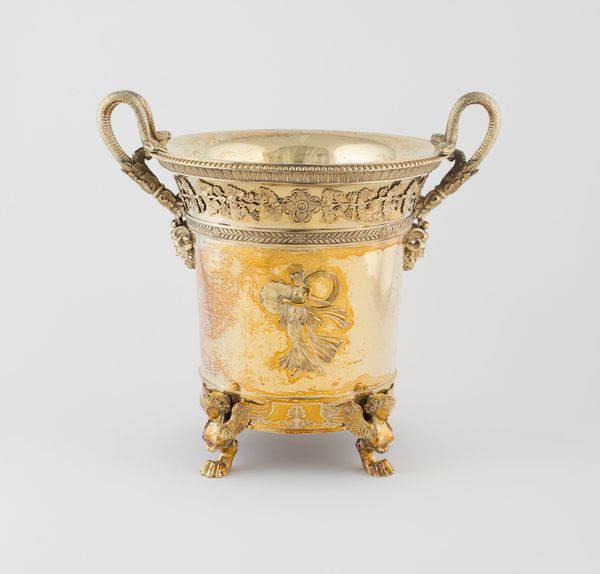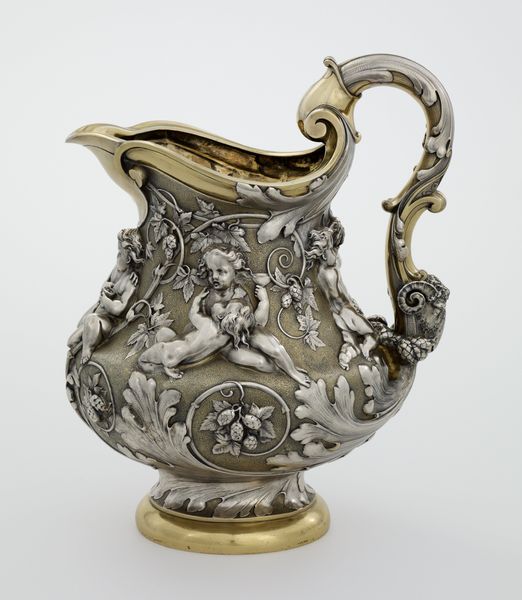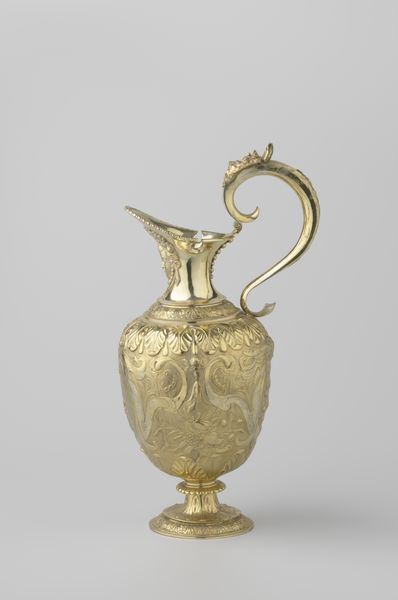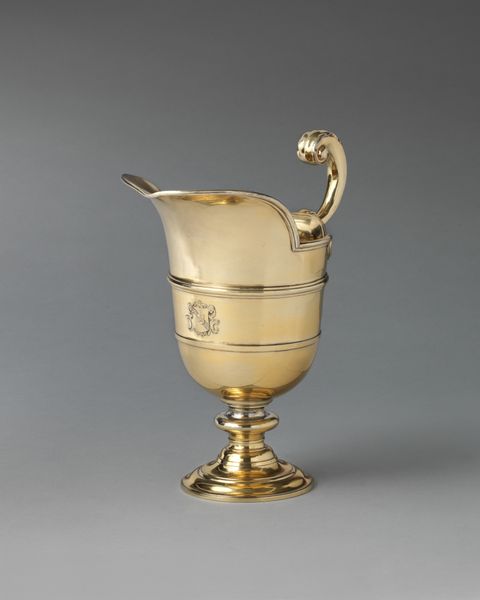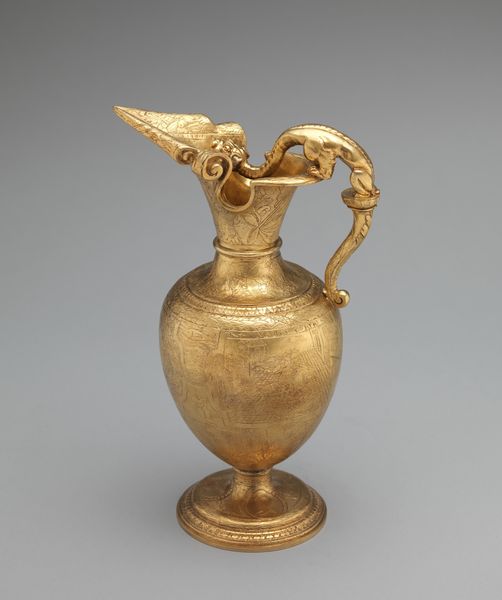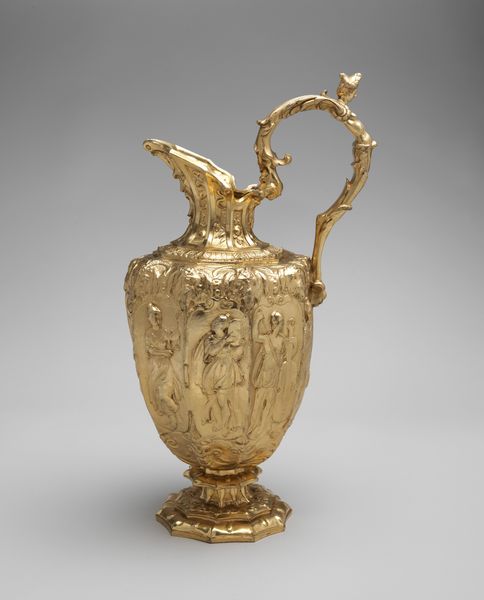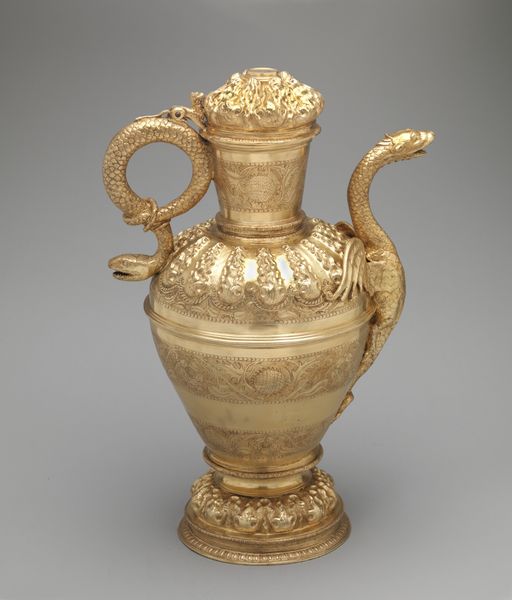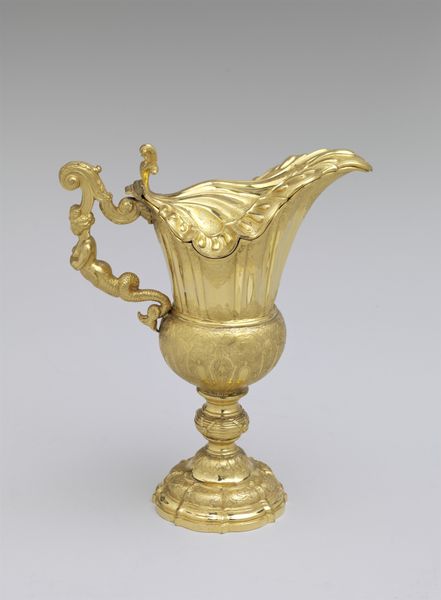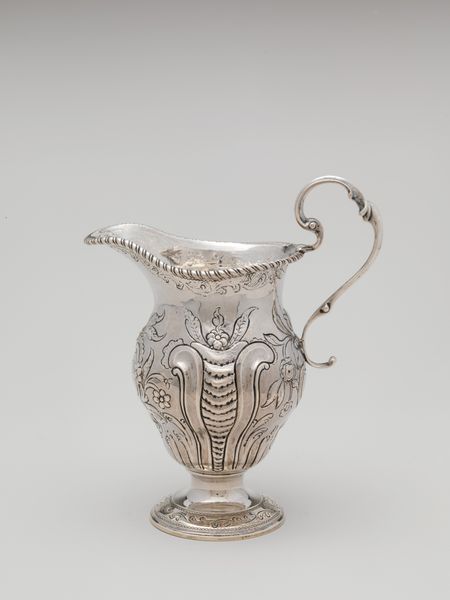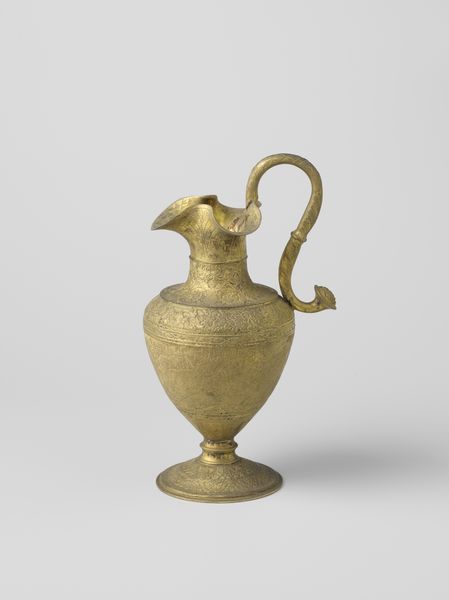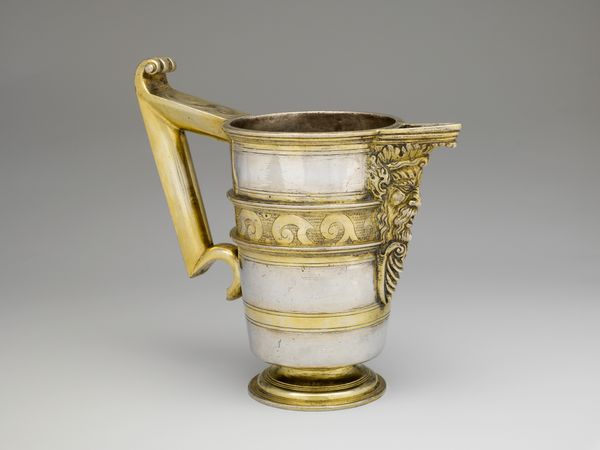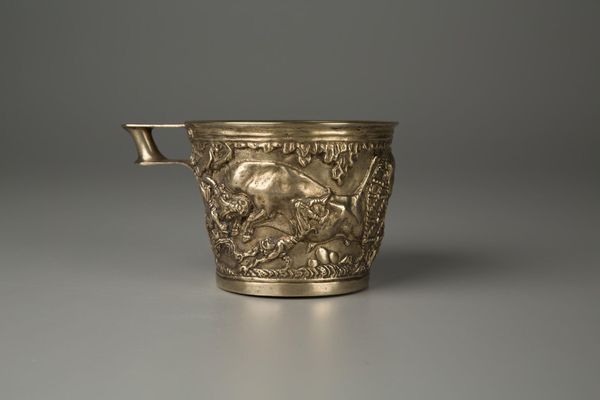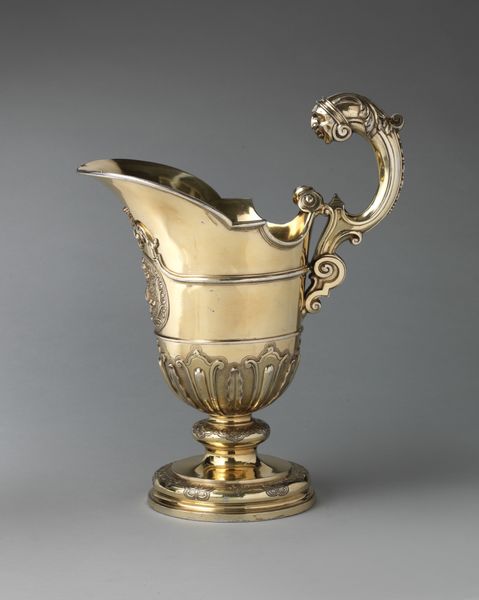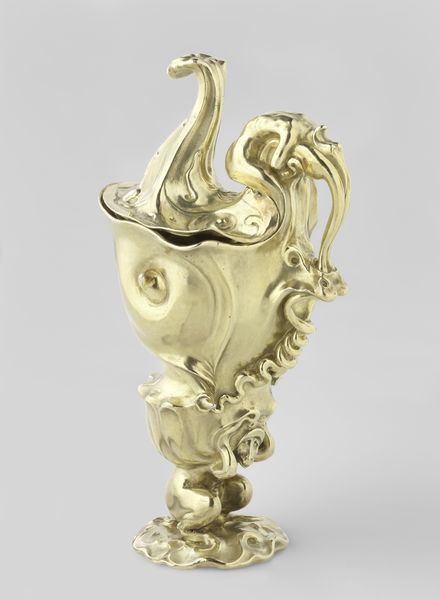
metal, gold, ink, sculpture
#
art-nouveau
#
metal
#
gold
#
vessel
#
ink
#
sculpture
#
decorative-art
Dimensions: 22.9 × 21 cm (9 × 8 1/4 in.)
Copyright: Public Domain
Curator: Here we have Theodore B. Starr's "Tyg (Cup)," created around 1900. It’s crafted from gold, exhibiting the decorative flourishes emblematic of the Art Nouveau period. Editor: The gleaming surface immediately strikes me; it’s radiant, but the intricate floral motifs create a sense of delicate restraint. The three-footed base and twin handles suggest ceremonial usage, but with an aura of quiet opulence, not bombast. Curator: The "tyg" itself has a fascinating history. While this example showcases Art Nouveau aesthetics, tygs, or multi-handled drinking cups, historically facilitated communal drinking practices—potentially unifying or exclusive depending on who shared it. Think about the gendered implications of decorative arts during the late 19th and early 20th centuries. Editor: The presence of those intertwined leaf patterns wrapping the cup speak of nature's abundance, an invocation perhaps, or a stylized remembrance. These organic shapes link it to deeper concepts: cycles of life and fertility, even a connection to Dionysian rites associated with drink. Do you see echoes of classical amphorae, perhaps reborn in a modern gilded form? Curator: Definitely. I appreciate your point about cycles; the Art Nouveau artists consistently turned toward the natural world, seeking renewal amidst industrial expansion and challenging rigid Victorian social constraints. To partake from a vessel like this becomes an act of symbolic rebellion. How were people permitted or denied the fruits of labor? Editor: Exactly. A sip transcends mere refreshment; it's an aesthetic, almost spiritual, act. And while the form harkens to shared experiences, there is also a quiet individuality present, doesn’t this suggest intimate pleasure? This makes you question who was truly meant to utilize the art work? Was it more a representation of stature? Curator: That's perceptive, there were layers of consumption in this era to be interrogated. Thank you. It pushes me to ask whether we've broken those old molds. Editor: And I'm contemplating all the secret histories of craft and symbol wrapped up within it, wondering if we fully understand how stories like this will echo.
Comments
No comments
Be the first to comment and join the conversation on the ultimate creative platform.
